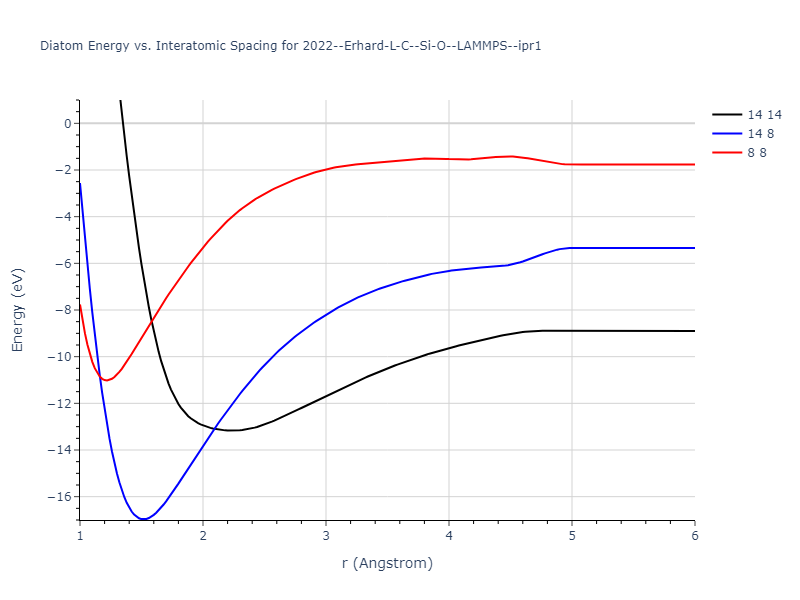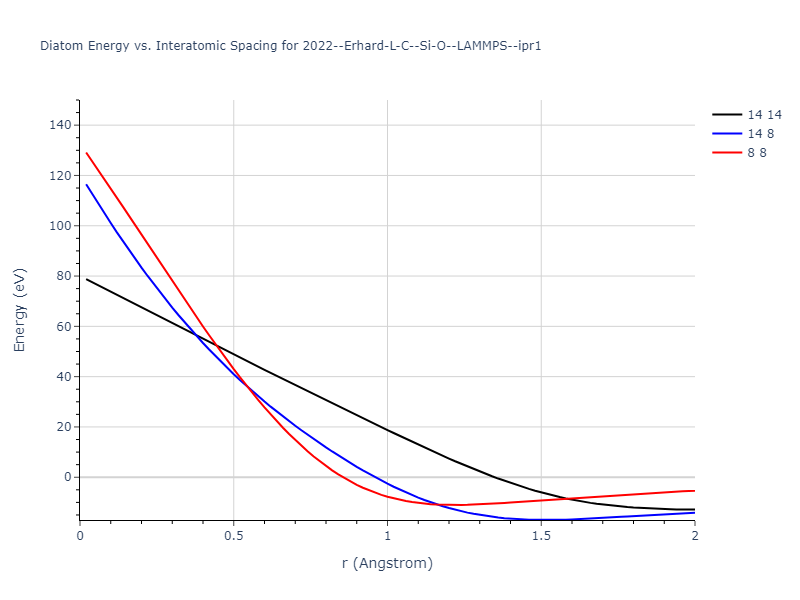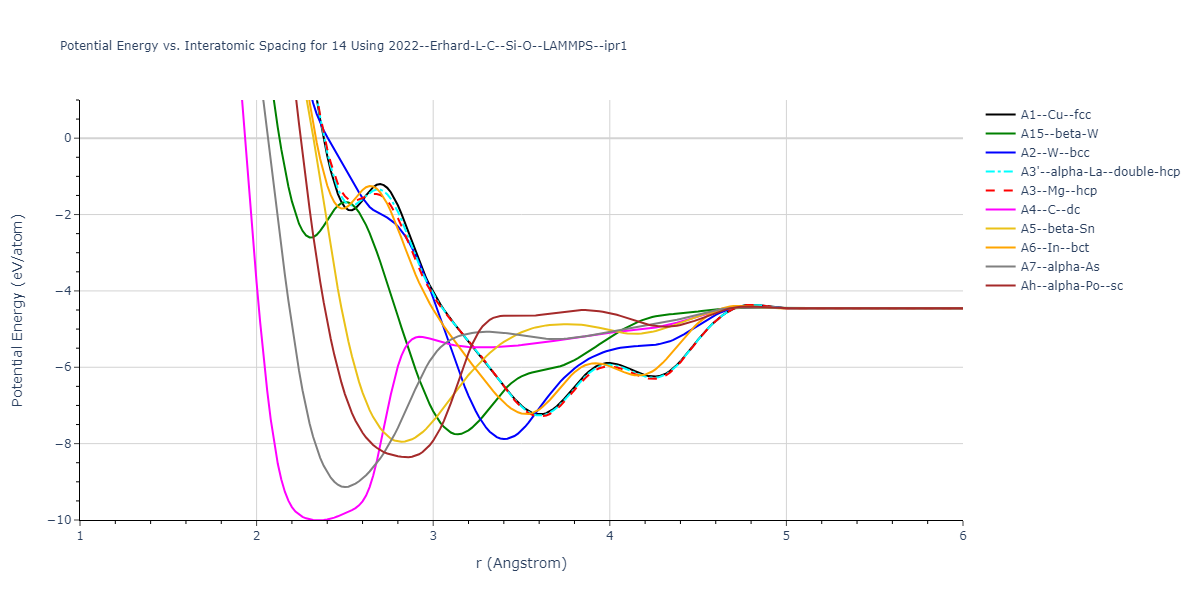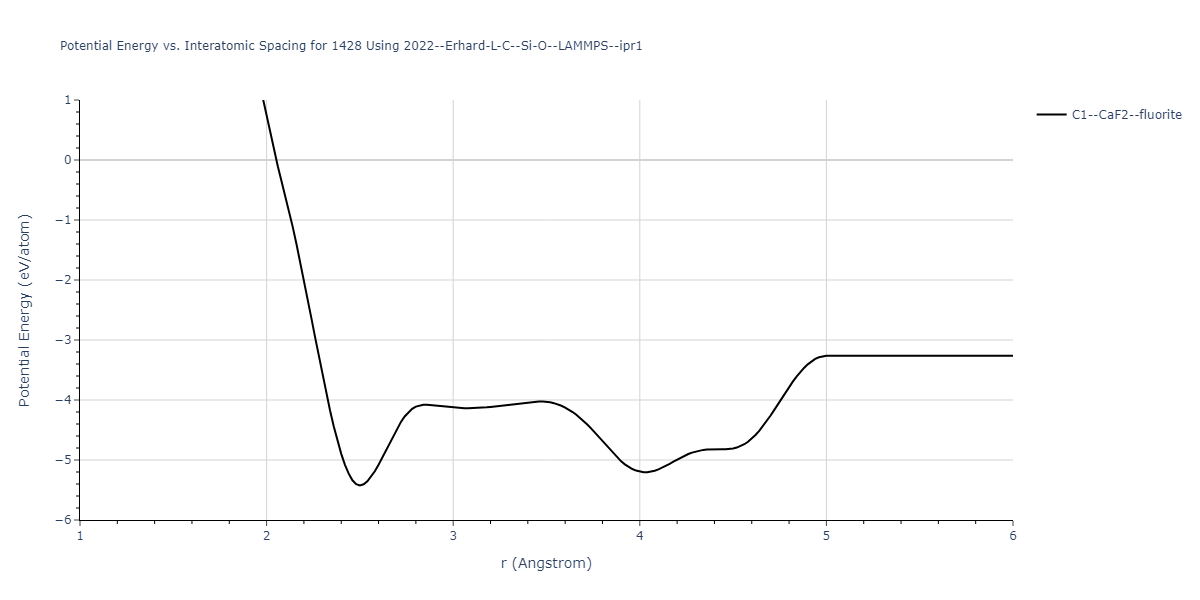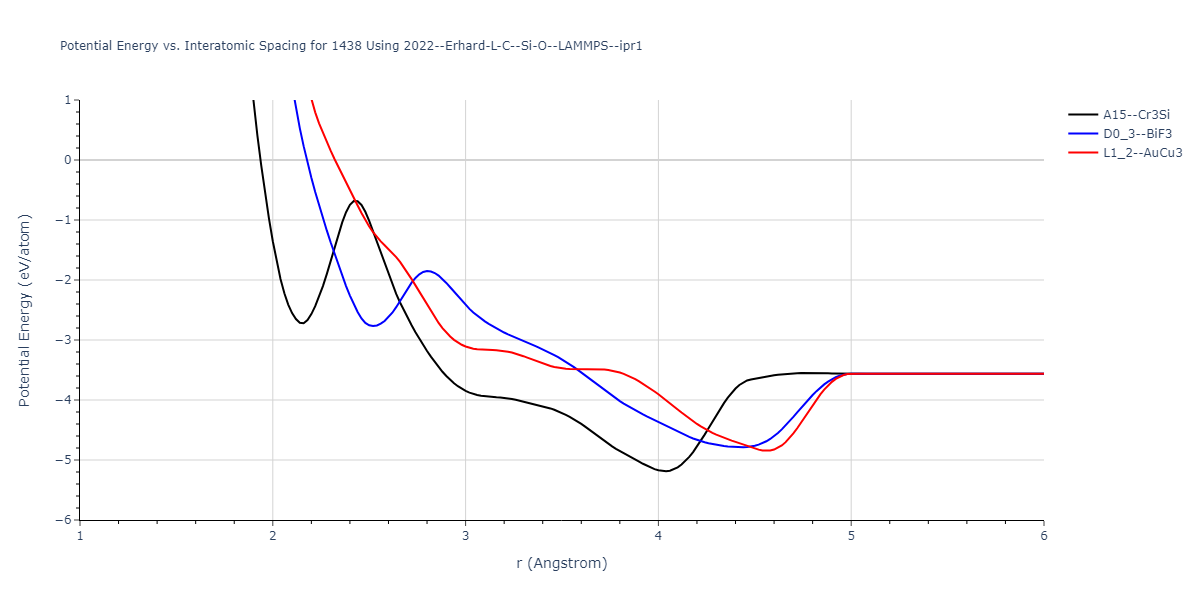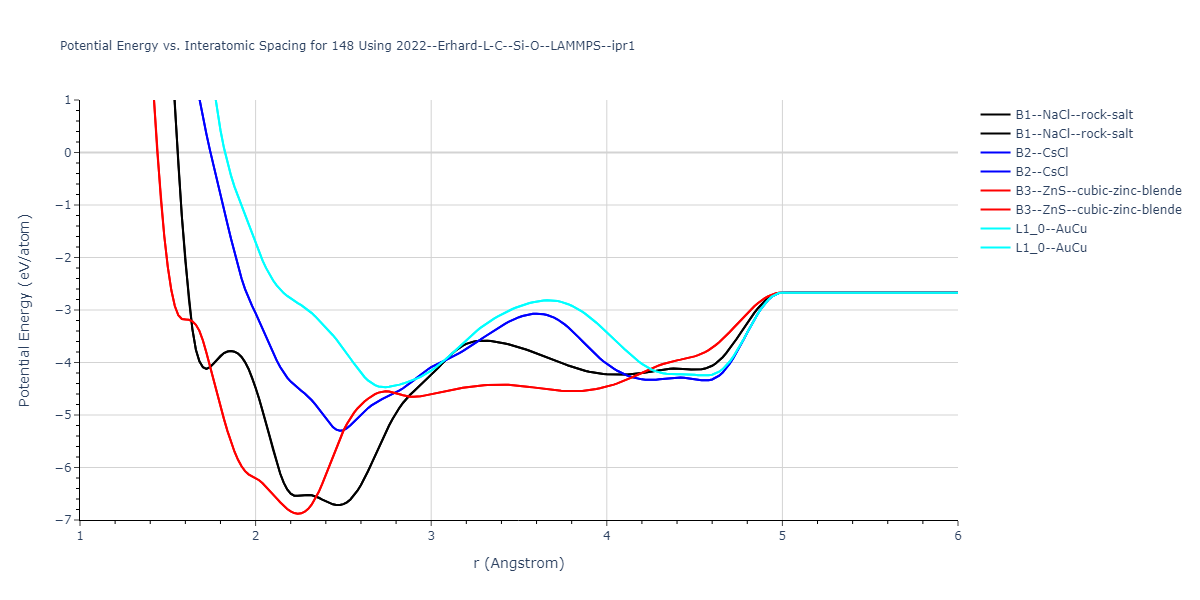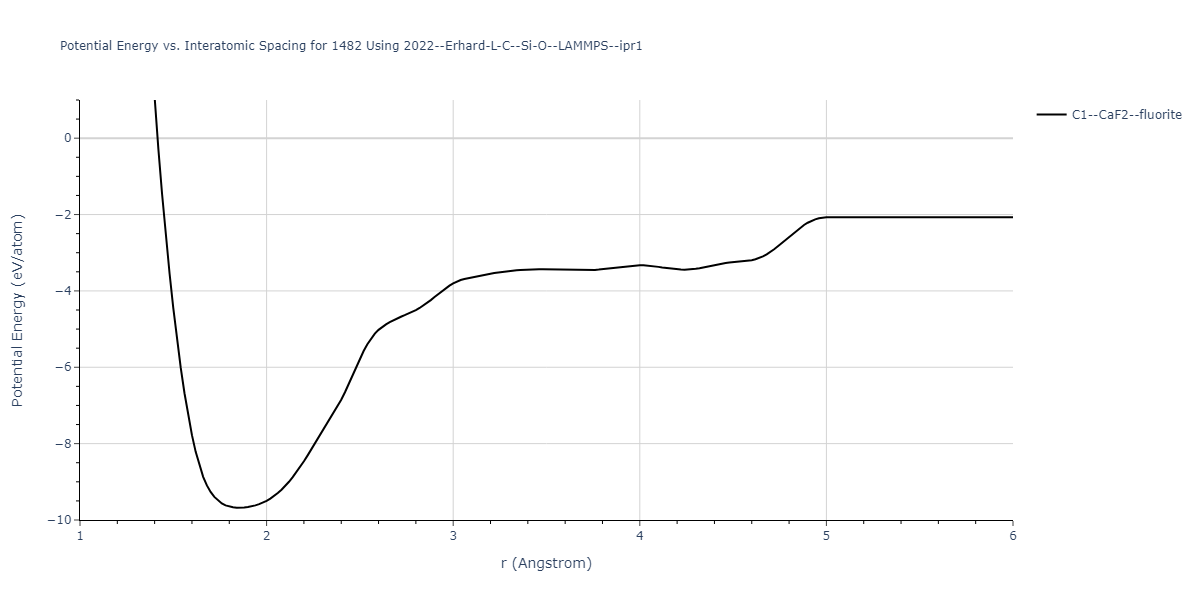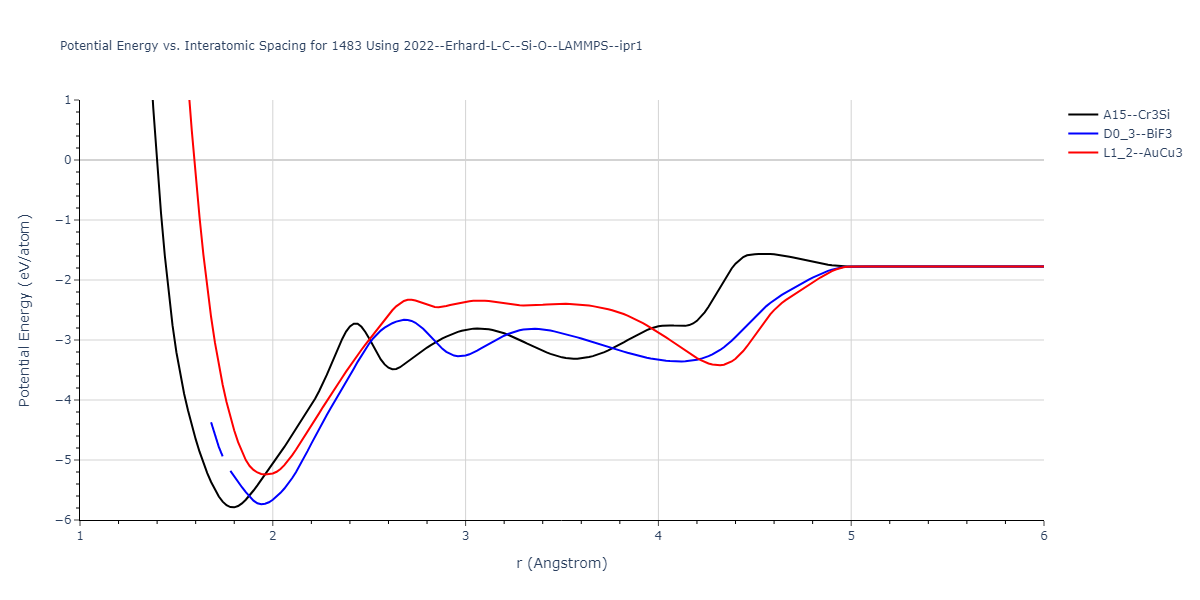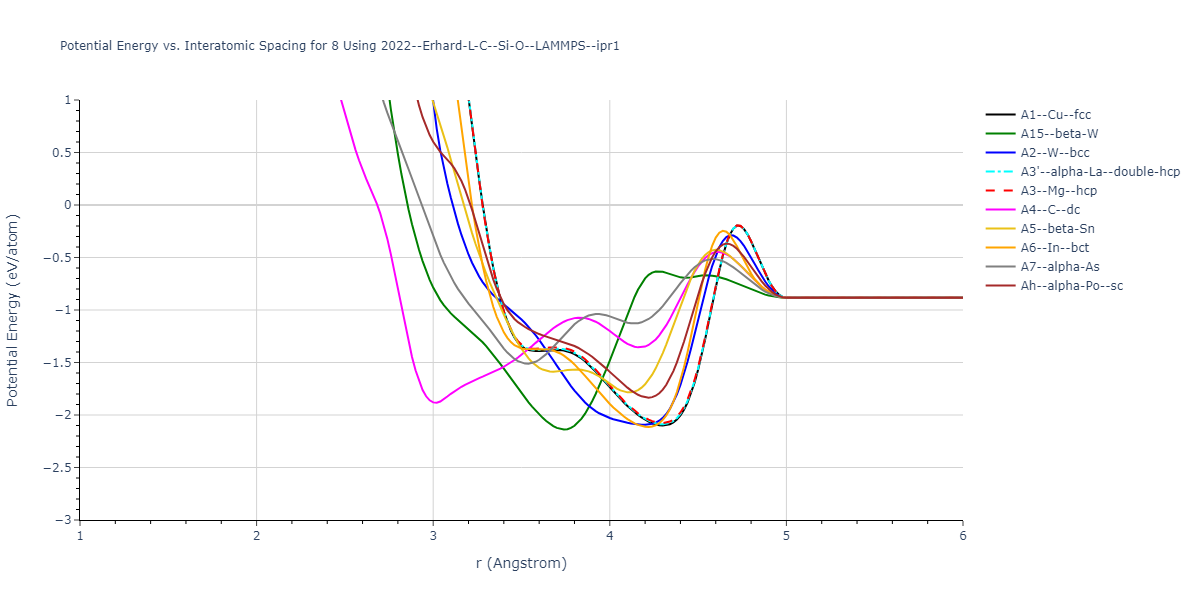-
Citation: L.C. Erhard, J. Rohrer, K. Albe, and V.L. Deringer (2022), "A machine-learned interatomic potential for silica and its relation to empirical models", npj Computational Materials 8(1), 90. DOI: 10.1038/s41524-022-00768-w.Abstract: Silica (SiO2) is an abundant material with a wide range of applications. Despite much progress, the atomistic modelling of the different forms of silica has remained a challenge. Here we show that by combining density-functional theory at the SCAN functional level with machine-learning-based interatomic potential fitting, a range of condensed phases of silica can be accurately described. We present a Gaussian approximation potential model that achieves high accuracy for the thermodynamic properties of the crystalline phases, and we compare its performance (and performance-cost trade-off) with that of multiple empirically fitted interatomic potentials for silica. We also include amorphous phases, assessing the ability of the potentials to describe structures of melt-quenched glassy silica, their energetic stability, and the high-pressure structural transition to a mainly sixfold-coordinated phase. We suggest that rather than standing on their own, machine-learned potentials for silica may be used in conjunction with suitable empirical models, each having a distinct role and complementing the other, by combining the advantages of the long simulation times afforded by empirical potentials and the near-quantum-mechanical accuracy of machine-learned potentials. This way, our work is expected to advance atomistic simulations of this key material and to benefit further computational studies in the field.
Notes: The potential was designed for crystalline, amorphous and liquid silica and shows also good behavior for certain high-pressure phases. It is not tested for silica surfaces and non stoichiometric phases (non SiO2).
-
See Computed Properties
Notes: These files were provided by Linus Erhard on Nov 1, 2022, and are alternatively available at the links listed below. For running the potential the QUIP package within LAMMPS is necessary. The file pot.in gives an example of the LAMMPS inputs to use to run this potential. Alternatively, the potential can be used in a python-ase interface called quippy.
File(s):pot.inLink(s):
silica_gap.xml
silica_gap.xml.sparseX.GAP_2021_4_19_120_7_32_55_3361
silica_gap.xml.sparseX.GAP_2021_4_19_120_7_32_55_3362
silica_gap.xml.sparseX.GAP_2021_4_19_120_7_32_55_3363
silica_gap.xml.sparseX.GAP_2021_4_19_120_7_32_55_3364
silica_gap.xml.sparseX.GAP_2021_4_19_120_7_32_55_3365zenodo, includes training data https://doi.org/10.5281/zenodo.6353684
Implementation Information
Diatom Energy vs. Interatomic Spacing
Plots of the potential energy vs interatomic spacing, r, are shown below for all diatom sets associated with the interatomic potential. This calculation provides insights into the functional form of the potential's two-body interactions. A system consisting of only two atoms is created, and the potential energy is evaluated for the atoms separated by 0.02 Å <= r <= 6.0> Å in intervals of 0.02 Å. Two plots are shown: one for the "standard" interaction distance range, and one for small values of r. The small r plot is useful for determining whether the potential is suitable for radiation studies.
The calculation method used is available as the iprPy diatom_scan calculation method.
Clicking on the image of a plot will open an interactive version of it in a new tab. The underlying data for the plots can be downloaded by clicking on the links above each plot.
Notes and Disclaimers:
- These values are meant to be guidelines for comparing potentials, not the absolute values for any potential's properties. Values listed here may change if the calculation methods are updated due to improvements/corrections. Variations in the values may occur for variations in calculation methods, simulation software and implementations of the interatomic potentials.
- As this calculation only involves two atoms, it neglects any multi-body interactions that may be important in molecules, liquids and crystals.
- NIST disclaimer
Version Information:
- 2019-11-14. Maximum value range on the shortrange plots are now limited to "expected" levels as details are otherwise lost.
- 2019-08-07. Plots added.
Cohesive Energy vs. Interatomic Spacing
Plots of potential energy vs interatomic spacing, r, are shown below for a number of crystal structures. The structures are generated based on the ideal atomic positions and b/a and c/a lattice parameter ratios for a given crystal prototype. The size of the system is then uniformly scaled, and the energy calculated without relaxing the system. To obtain these plots, values of r are evaluated every 0.02 Å up to 6 Å.
The calculation method used is available as the iprPy E_vs_r_scan calculation method.
Clicking on the image of a plot will open an interactive version of it in a new tab. The underlying data for the plots can be downloaded by clicking on the links above each plot.
Notes and Disclaimers:
- These values are meant to be guidelines for comparing potentials, not the absolute values for any potential's properties. Values listed here may change if the calculation methods are updated due to improvements/corrections. Variations in the values may occur for variations in calculation methods, simulation software and implementations of the interatomic potentials.
- The minima identified by this calculation do not guarantee that the associated crystal structures will be stable since no relaxation is performed.
- NIST disclaimer
Version Information:
- 2020-12-18. Descriptions, tables and plots updated to reflect that the energy values are the measuredper atom potential energy rather than cohesive energy as some potentials have non-zero isolated atom energies.
- 2019-02-04. Values regenerated with even r spacings of 0.02 Å, and now include values less than 2 Å when possible. Updated calculation method and parameters enhance compatibility with more potential styles.
- 2019-04-26. Results for hcp, double hcp, α-As and L10 prototypes regenerated from different unit cell representations. Only α-As results show noticable (>1e-5 eV) difference due to using a different coordinate for Wykoff site c position.
- 2018-06-13. Values for MEAM potentials corrected. Dynamic versions of the plots moved to separate pages to improve page loading. Cosmetic changes to how data is shown and updates to the documentation.
- 2017-01-11. Replaced png pictures with interactive Bokeh plots. Data regenerated with 200 values of r instead of 300.
- 2016-09-28. Plots for binary structures added. Data and plots for elemental structures regenerated. Data values match the values of the previous version. Data table formatting slightly changed to increase precision and ensure spaces between large values. Composition added to plot title and structure names made longer.
- 2016-04-07. Plots for elemental structures added.
